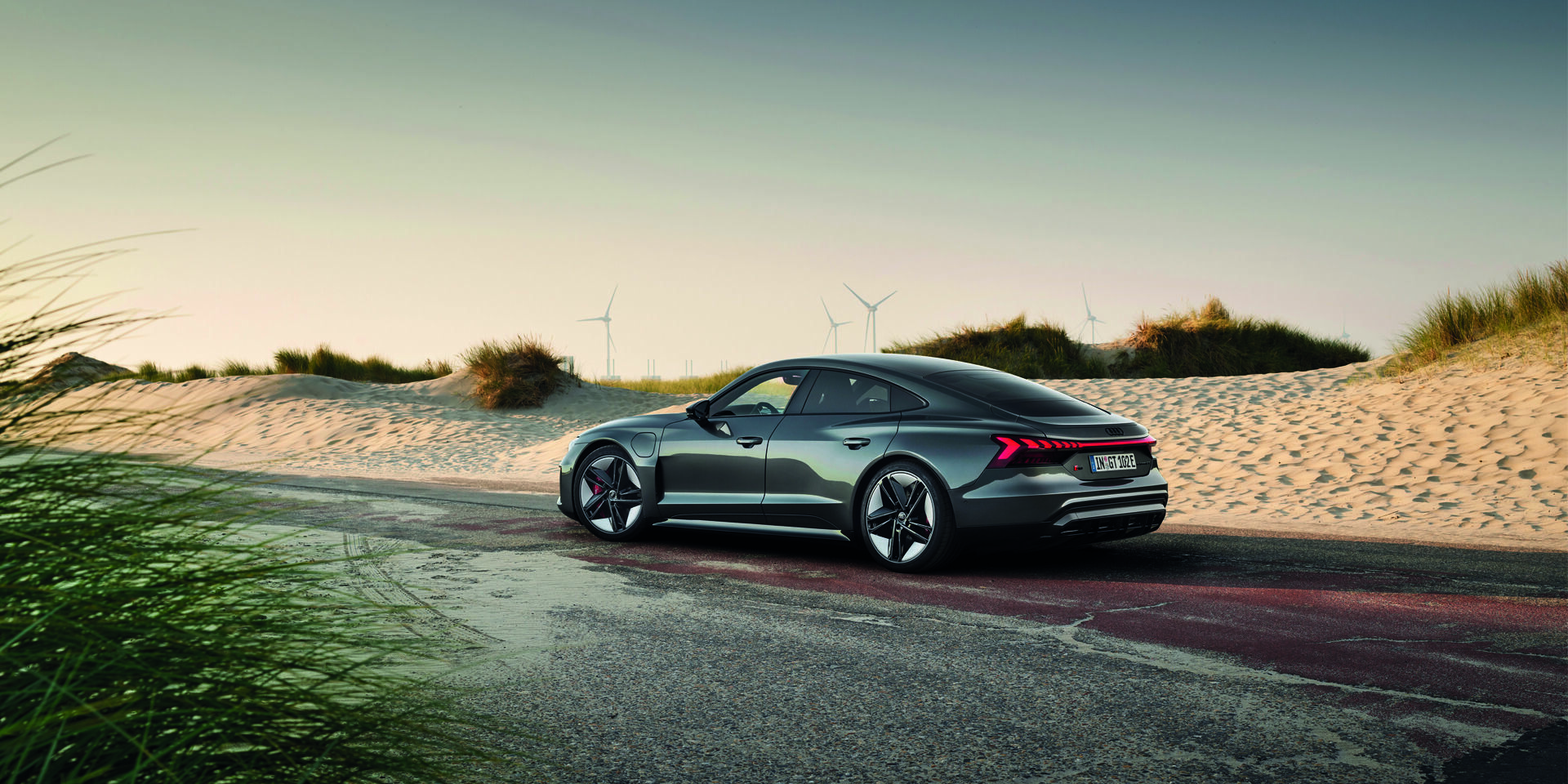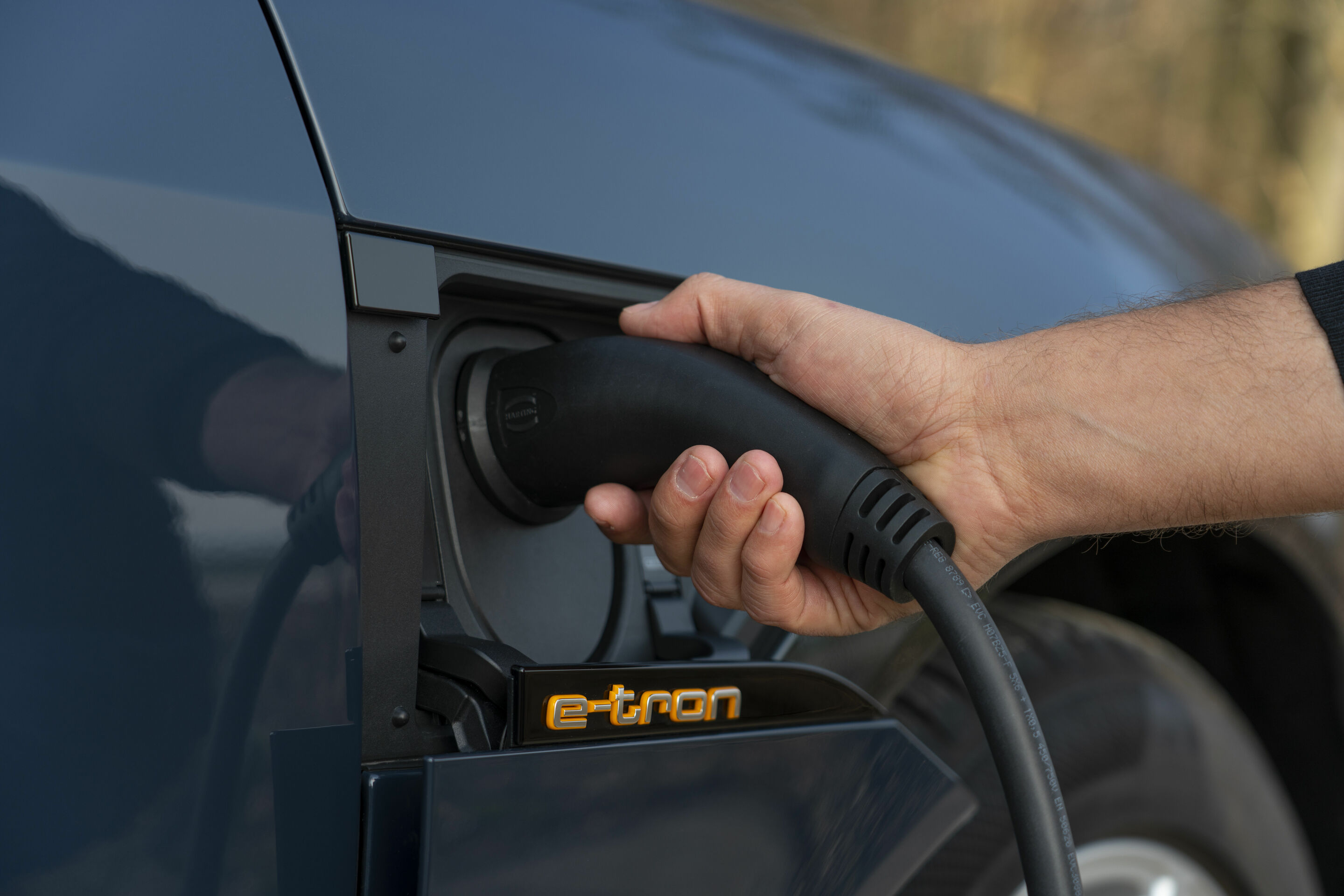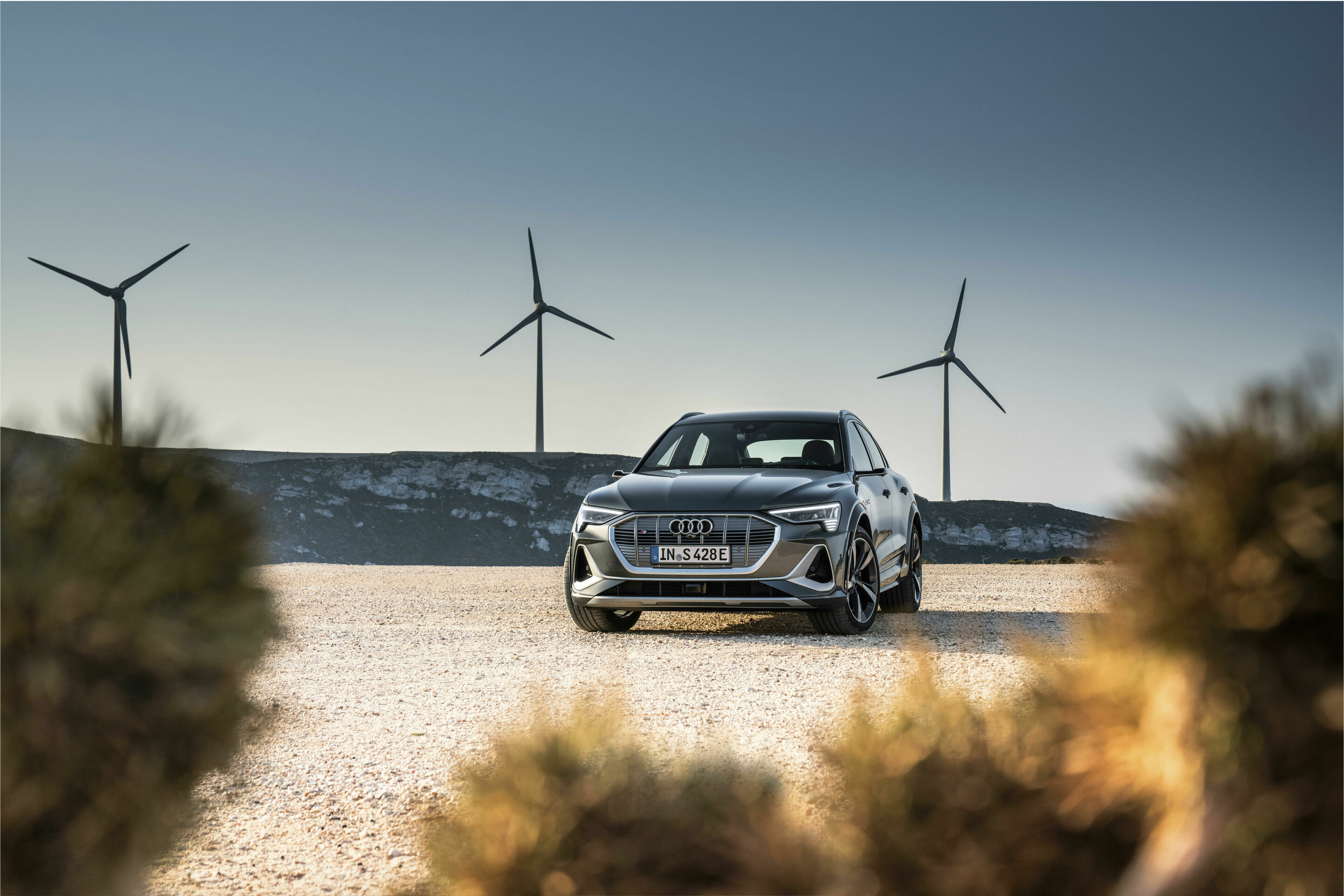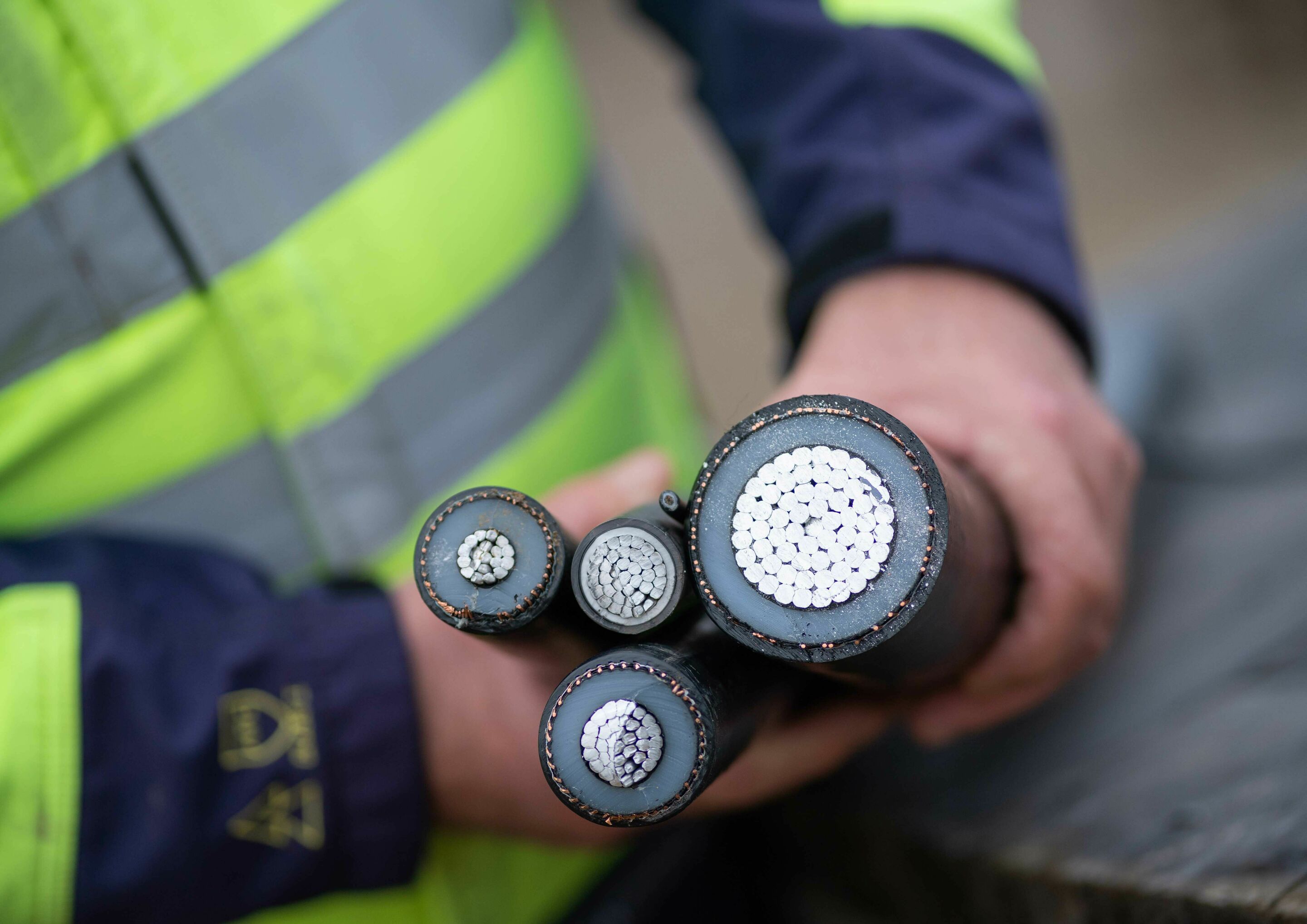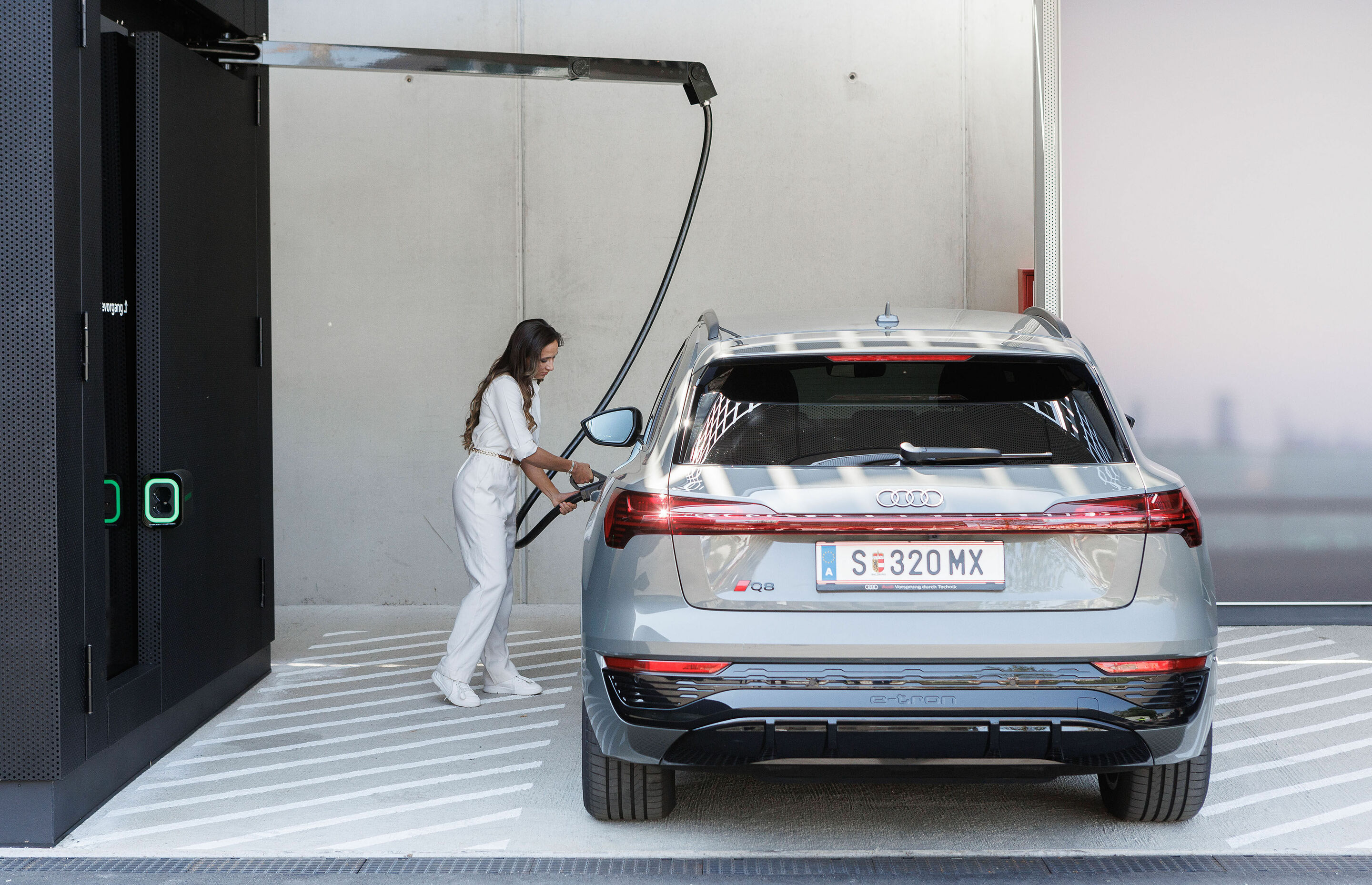More green power for Audi’s European e-tron fleet
More green power for Audi’s electric fleet in Europe
It’s an ambitious plan: Audi wants to play its part in upholding the Paris Climate Accords by making the entire company net carbon neutral1 by no later than 2050. To achieve this collectively with customers, the brand with the four rings relies on green electricity to power Audi’s fully electric fleet in Europe, among other things. After all, a critical component in a vehicle’s carbon footprint is its utilization phase. This phase covers the period during which the car is driven by customers, making the fuel or charging power a key factor throughout. A car generates about half the emissions of its entire lifecycle during utilization.
No sustainability without green power
Audi is, therefore, focusing on the power used to charge its electric fleet as a critical lever for reducing carbon emissions. For example, Audi customers can already use the green power solutions offered by Volkswagen subsidiary Elli (Electric Life) to charge their cars at home. For charging on the road, the charging network from IONITY also uses green power. Audi’s involvement in this joint venture will provide more than 5,000 additional fast-charging points with up to 350 kW of charging power at over 1,000 European locations by the end of 2025.
Increase the amount of green power
The construction of new wind and solar parks is planned for various European countries in cooperation with several partners by the end of 2025. Altogether, they will generate around five terawatt hours of additional green power. This corresponds to an installed capacity of about 250 new wind turbines.
With this initiative, Audi and the Volkswagen Group are making a measurable contribution toward offsetting the additional energy that new customers of its electric fleet consume by using power from renewable energy sources and in doing so are not relying on existing sources of renewable electricity.
Together with cooperation partners, Audi wants to increase the electricity generated from renewable sources in parallel with the growing proportion of electric cars.
A lifecycle analysis of the Audi Q4 e-tron demonstrates that this commitment is worthwhile: When 100 percent green power is used to charge a vehicle during the utilization phase, its potential greenhouse gas emissions can be reduced by around 45 percent, saving around 14.3 tons of CO2.
50,000 households, 0.17 terawatts, 420,000 solar panels
The first project to expand the supply of green power in Germany is a solar park in Mecklenburg-Vorpommern, built in collaboration with the German utility company RWE. The plant, which went on stream in early 2022, is designed for a total capacity of 0.17 terawatt hours. By converting solar energy to electricity, the plant produces the equivalent amount of electricity to power 50,000 households annually.
With nearly 420,000 solar panels, it is one of Germany's largest independent solar parks. In Spain, three solar parks and one wind farm also went into operation in 2021. And additional projects throughout Europe are set to go. They are intended primarily for areas where the charging demand is particularly high.
1 Audi understands net-zero carbon emissions to mean a situation in which, after other possible reduction measures have been exhausted, the company offsets the carbon emitted by Audi’s products or activities and/or the carbon emissions that currently cannot be avoided in the supply chain, manufacturing, and recycling of Audi vehicles through voluntary offsetting projects carried out worldwide. In this context, carbon emissions generated during a vehicle’s utilization stage, i.e., from the moment of delivery to the customer, are not considered.
As of: March 2025
